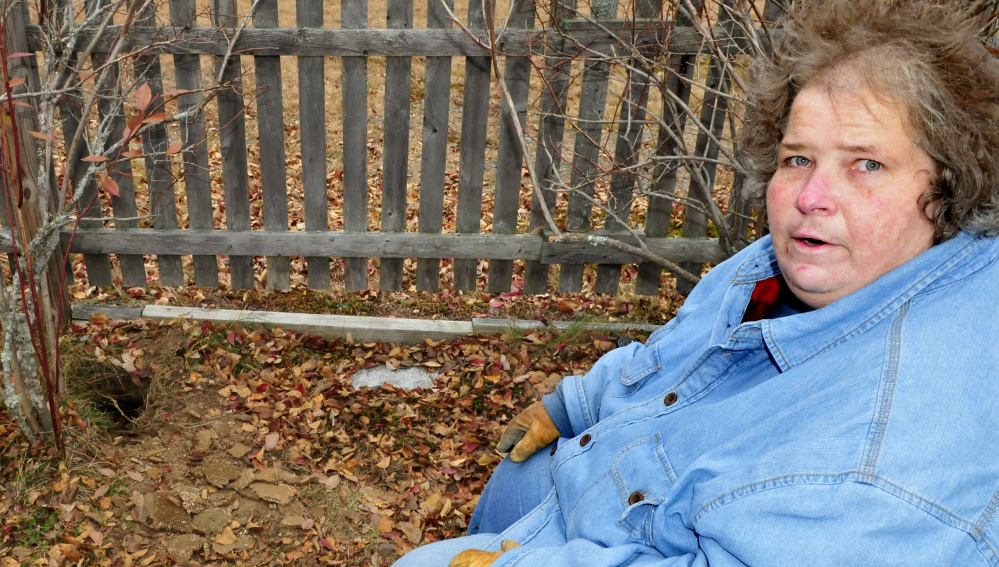SKOWHEGAN — Sue Willumson gets around her yard quite well, tending to her berry bushes, ornamental apple trees, flowering shrubs and miniature conifers.
So when bees — or wasps — arrived in the spring and set up housekeeping deep in the sandy soil next to the roots of her prized high-bush blueberry plant, she was ready to do battle if she had to.
“I’ve been battling bees all summer,” Willumson said Wednesday. “When the blueberries were really starting to come in full, the bees were just coming out of this nest in the ground.”
She said she went to a hardware store to get some spray to kill the growing hive, but “nuttin’ doin'” she said. So she decided to let the creatures be and get back to them in the fall when the nest would be quieter.
That was this week.
“I was working and came down here with my wheelchair and couldn’t believe what I saw,” she said.
What she saw was the total destruction of a large hive that poked from the ground. Big broken pieces of what appeared to be honeycombs littered the ground, which clearly had been dug up by an animal — most likely a skunk, or maybe a fox, she said.
“I don’t understand why (the animals) didn’t touch this all summer,” she said, bending over to pick up an empty, pitted comb. “There had to have been honey in there or something. These guys had to have been doing something all summer. There was obviously something in there that they wanted.”
Now she thinks the flying creatures might have been sand wasps, also known as paper wasps, and not bees at all.
Honeybees are different from wasps. Bees are pollinators. Wasps are predators that rear their young on a diet of live insects.
Some wasps are social insects and produce a colony. Colonies begin anew each spring, initiated by a single fertilized female (queen) that has survived winter, according to the Maine.gov website section on wasps and bees. The social wasps construct their nest of paper, which they produce by chewing on wood, scraps of paper and cardboard.
Bees are small. Wasps can measure up to about an inch long — the size of the ones Willumson saw this summer.
In the fall, colonies are abandoned never to be reused, and the fertilized females scatter to find protection during winter. The remaining colony members perish when cold weather arrives.
Whatever they were — bees or wasps — the hive went deep into the sandy soil of Willumson’s back yard. Her job later this week will be to either dig up the remaining nest or cover it so nothing will use it again and her high-bush blueberries will be safe.
“It’s nothing I’ve ever seen,” she said. “It was at the root of the blueberry bush, and I want to get all of that out and fill it so I don’t lose this bush.”
Doug Harlow — 612-2367
Twitter:@Doug_Harlow
Send questions/comments to the editors.




Success. Please wait for the page to reload. If the page does not reload within 5 seconds, please refresh the page.
Enter your email and password to access comments.
Hi, to comment on stories you must . This profile is in addition to your subscription and website login.
Already have a commenting profile? .
Invalid username/password.
Please check your email to confirm and complete your registration.
Only subscribers are eligible to post comments. Please subscribe or login first for digital access. Here’s why.
Use the form below to reset your password. When you've submitted your account email, we will send an email with a reset code.